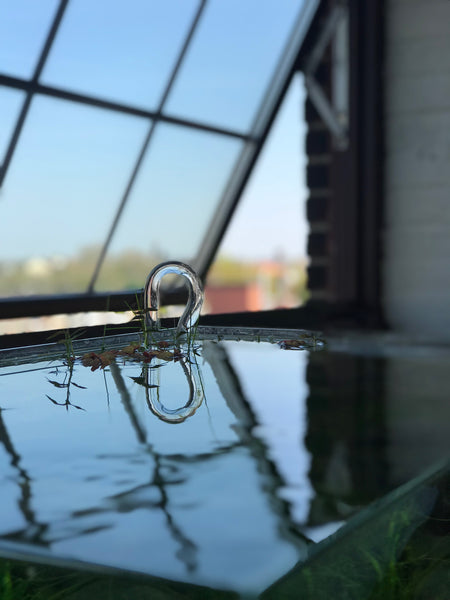Choosing the Right Tank for your Planted Aquarium
Plan Accordingly
With all of the planning and nuance that goes into setting up a serious planted aquarium and aquascape, it can be easy to get lost in the weeds. There are plenty of exciting planning that must be done- from the plant selection, hardscape and layout considerations, down to the choice of aquarium lighting, CO2 injection, etc. It seems surprising, but one of the least thought-out aspects of new tank setups is the selection of the actual, physical tank that will hold all of your ideas together. Treat this critical item as an afterthought, and you will potentially be in for an unsatisfying and awkwardly-proportioned situation.
Ditch the Rims
First off- ditch the rims. If you haven’t already, invest in a nice, clean, rimless aquarium that will better showcase the beautiful aquascape you spent so much time and effort creating. Ugly plastic rims, and even worse, hoods (bonus points if they come with incandescent light bulbs), truly detract from even the most exciting, aesthetically pleasing scapes.
“Please,” I can hear some of you groaning. “This article is clearly written by someone who doesn’t own a cat.” I don’t own a cat, but I do own glass lids (held in place by discrete wire clips) that do the same job securing the top of my rimless tanks if needed. I’m not sure if they can support the weight of a cat, but if your cat likes to jump into your aquariums, you have worse problems than I can fix!
Proportions and Why it Matters
In terms of proportions, it’s generally better to go longer, wider, and shallower, as opposed to taller, “deeper,” and skinnier. While there are obvious exceptions to this rule, the classic 60cm tank proportions (with a 24” depth and 14” height) are the gold standard. It’s much easier to convey a beautiful sense of scale, utilizing the ‘golden ratio;’ my UNS 60U tanks look visually balanced and provide plenty of “floorspace” to get creative with planting. If I had chosen a cube-shaped tank, or worse, a tank with a greater height than width, it would have provided a more challenging canvas for scaping. Still, there are many talented aquarists who could make these shapes look great- it’s just more difficult.
Fish and other livestock tend to appreciate tanks with a high surface area to volume ratio as well; greater room to swim and better diffusion of oxygen throughout the tank create a more pleasant living environment for your tank’s inhabitants. Particularly shallow tanks like the UNS 60S are increasingly popular, and are well suited for growing emergent plants, emulating a pond or the side of a stream.
Size Matters
In terms of size, the mantra ‘get the biggest tank you can fit or afford’ is often repeated for a reason. Smaller tanks are more difficult to aquascape, less stable in terms of water parameters, and can hold less livestock than larger tanks. With that said, there are plenty of instances when a smaller tank is warranted and can be executed well- it all depends on your goals for the tank. For example, a small, two-gallon shallow tank might be perfect for a tank with emergent plants and perhaps a few shrimp but would make a poor home for a school of fish. In general, you can’t go wrong with a 10-gallon tank, or preferably a 20 gallon+ tank.
With all of that said, don’t be afraid to let creativity be your guide. Above all, creating a healthy environment for the livestock is the goal; if you can create an aesthetically pleasing set up along the way, even better!
Tell us - Was this article helpful? Please leave a comment below!
If you have any questions regarding this article, please DM us on Instagram, Facebook, or email support@buceplant.com so we can assist you - @buceplant








Leave a comment